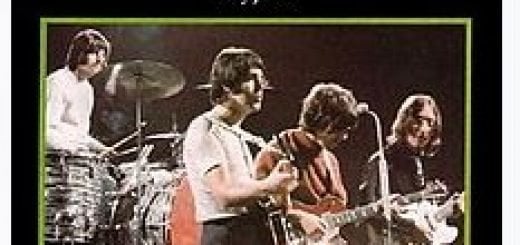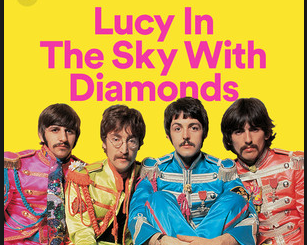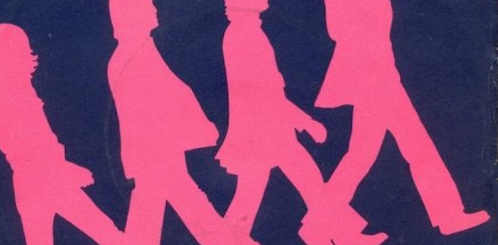“A Day in the Life” by The Beatles
Like many classic Beatles’ songs, “A Day in the Life” is not based on one central storyline. In fact it can be said that it is not based on any storyline at all but rather serves as a hodge-podge of thoughts its writers and vocalists, Paul McCartney and John Lennon, were having at the time. Or stated differently, by and large the lyrical foundation of this song can be traced back to two newspaper articles which Lennon came across via the “Daily Mail” newspaper dated 17 January 1967. But the vocalists do not make a hardcore attempt to stick to the facts of said articles. And we can say that this title of this song is supposed to represent more or less an average day in lives of the singers. That would be why John begins the song by exclaiming “I read the news today”.
First Verse
So we know that the first verse for instance is based on an article about the death of Tara Browne (1945-1966). This young man was actually the heir to the Guinness (brewery) fortune. He had actually passed away 18 December 1966, but the aforementioned edition of the “Daily Mail” featured his official coroner’s report. And in it, it was made known how he met his end via a high-speed car crash. Many of the details of that incident are reflective in the first verse, albeit the wording being somewhat ambiguous. In fact McCartney has stated that his contribution to the passage was not actually inspired by the death of Tara at all. So it’s almost like Lennon was writing about the real-life Tara Browne incident, while Macca was adding something completely-fictional to the equation.
Second Verse
The second verse, when John mentions “the English Army” and a certain “war” they had “won”, has been deduced to actually be a reference to a film. Said movie is a comedy entitled “How I Won the War” (1967), which Lennon himself co-starred in.
Bridge
Meanwhile it is Macca who handles the bridge. And he too reflects on ‘a day in his life’. But instead of basing the lyrics on an adult experience, he alludes his childhood, i.e. being late for school and accordingly having to rush to catch the bus.
Third Verse
Then the final verse of the song is once again based on a newspaper article as explained above. But this time he is referring to a story about potholes which were plaguing a particular part of England known as “Blackburn, Lancashire”. And again, not all of the lyrics are meant to be true to real life. For instance, whereas the mention of Blackburn may have been genuine, Lennon-McCartney also contributed London’s “Albert Hall” to the mix primarily because they needed a filler word, and the term sounded good in that particular segment. And even Lennon had acknowledged that overall the verse doesn’t really make sense.
Conclusion
Indeed at the end of the day, being totally honest this is not one of the Beatles’ classics which is so due to its lyricism. Rather critics appreciate “A Day in the Life” more due to its auditory attributes, as it introduced a revolutionary sound to pop music during its day. In other words, the Beatles took an unconventional approach with the production of this song, as will be discussed in part in the trivia section. And what came out at the end of the day is what many believe to be the greatest track which this iconic band had ever released.

Writing Credits for “A Day in the Life”
As with most of the other Beatles’ songs from this era, the writing of this tune has been attributed to Lennon (1940-1980) and McCartney, as well as a mutual entity combining their two names known as Lennon-McCartney. And for the record, history recognizes Lennon himself as the primary writer of the tune.
It has been noted that Lennon-McCartney wrote this, as well as other songs on “Sgt. Pepper’s Lonely Hearts Club Band”, under the influence of certain substances. McCartney also later admitted that he was on both Mary J and coke around that time.
In fact there are arguably numerous references to intoxicants in the lyrics themselves. This of course did not go unnoticed by the BBC at the time, particularly the line “I’d love to turn you on” for some reason.
Release Date of “A Day in the Life”
This song does in fact belong to the Beatles’ classic “Sgt. Pepper’s Lonely Hearts Club Band” project, being the last track on the album. And it came out, via Parlophone Records, along with the rest of the album on 26th May, 1967. So after its release, the BBC went about banning the song on their station. And they did not lift this injunction until March of 1972.
Accolades
As with most of the other tracks on “Sgt. Pepper’s Lonely Hearts Club Band”, “A Day in the Life” was not released as a single. As such the song itself does not have a chart history. However, it is still very much considered to be a Beatles’ classic. For instance, the lyrics to it, which Lennon wrote with his own hand, were sold at a 2010 auction for the whopping sum of $1,200,000.
“A Day in the Life” was also nominated for a Grammy Award in 1967.
Moreover “Rolling Stone” went on to name it amongst their 2011 compilation of the “500 Greatest Songs of All Time”, placing it as high as number 28 on the list. And as recently as 2020, they also named it the ‘Greatest Beatles Song’ ever.
Recording Process
The instrumental to “A Day in the Life” utilizes the services of a 40-piece orchestra which McCartney and the track’s producer, George Martin (1926-2016), conducted.
The orchestra’s recording session were attended by a number of celebrities such as the following:
- Mick Jagger
- Keith Richards
- David Crosby
- Pattie Boyd
One interesting story behind that session is that whereas the orchestra musicians were told to dress formally, upon attending, they were given party favors like fake noses and gorilla gloves.
It has been noted that in its entirety, “A Day in the Life” took 34 hours to record. This was a considerable amount of time to spend in the studio for one track by the Beatles’ standard.
It should be noted that Mal Evans (1936-1976), one of the Beatles’ main roadies, also contributed to this track. More specifically, he is behind the alarm clock which can be heard at the introduction of the bridge.
Famous Covers of “A Day in the Life”
Some of the notable artists who have covered “A Day in the Life” include the London Symphony Orchestra as well as the Bee Gees, both in 1978. Also to Sting covered this in 1993.
Also a more-recent version of the song by Jeff Beck went on to win a Grammy Award in 2010. It won in the category of “Best Rock Instrumental Performance“.
No Mention of Title
It has been noted that “A Day in the Life” is a rarity amongst Beatles’ songs. And why? This is because the title of the track is never actually mentioned in the entire lyrics.









i remember singing this song at age 6. in the back seat of a Plymouth station wagon . by age 10 , this song was and is still my favorite Beatles song. A DAY IN THE LIFE